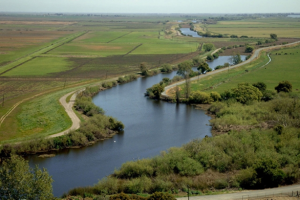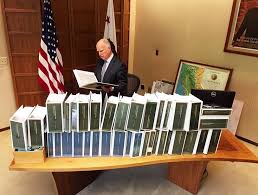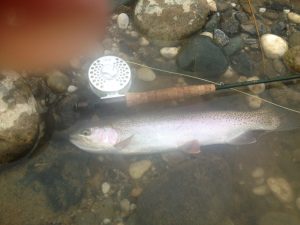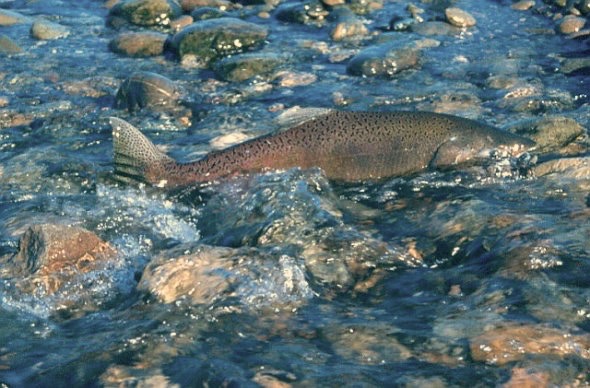On May 9, 2019, Governor Newsom released his proposed budget for the coming fiscal year. The website for CalCAN, the California Climate and Agricultural Network, reports[1] that the proposed budget would eliminate funding for SWEEP, [2] “the state’s on-farm water use efficiency program.” This is nuts.
The Brown administration initiated SWEEP during the 2014 drought. CalCAN reports that the 2018 SWEEP budget for on-farm water efficiency was $27 million. The problem with SWEEP is not that its money is badly spent. The problem is that it is underfunded by at least an order of magnitude, with a conceptual framework that is equally timid.
The immediate answer for the FY 2020 budget is to restore SWEEP and adding a zero to its 2018 budget. Yes, multiplying the budget by ten. A good chunk of this budget should be spent on establishing an organizational and administrative framework whose focus is institutional agricultural water use (e.g., on the level of irrigation districts) as well as individual farms. Because on a longer term basis, California needs a concerted, statewide campaign to increase agricultural water use efficiency.
Governor Newsom’s Order-N-10-19 issued on April 29 charged Secretaries Crowfoot (Cal Resources), Blumenfeld (Cal EPA) and Ross (Cal Food and Agriculture) with “together prepar[ing] a water resilience portfolio that meets the needs of California’s communities, economy, and environment through the 21st century.”[3] Simply put, no portfolio can meet those requirements without substantial investment in reducing agricultural water demand.
In CSPA et al.’s 2017 comments on the draft Substitute Environmental Document for the update of the Lower San Joaquin River Flow Objectives and Southern Delta Salinity, we presented a table of annual average unimpaired flow and water deliveries from the Merced, Tuolumne and Stanislaus rivers:

Figure 1: Annual median and average runoff, average agricultural deliveries and average M&I deliveries from the Merced, Tuolumne and Stanislaus Rivers[4]
As we stated in our comments on the SED:
California in general, and the San Joaquin tributaries in particular, have an unsustainable agricultural business model. It is a boom and bust cycle built on overallocation of water.[5] Too much delivery in good years creates crisis after 2-3 dry years. This system remains semi-functional only because it diverts water needed for rivers, over-pumps groundwater, or both. On the three major San Joaquin tributaries, average annual deliveries are about half of the average annual runoff (Figure 1). This level of deliveries is not sustainable and creates permanent stress on the system.
The need is not to put ag out of business, though some land does need to be retired. The need is for a new agricultural business model that does not rely on deficit spending of water resources: spending water on crops that should be in rivers and passing through the Delta and Bay.[6]
Agricultural water users simply must do their share to reduce the aggregate demands for water, and their share of water use is large. And no, that doesn’t mean saving water to increase cultivated acreage, put in more profitable tree crops, or sell the “saved” water to water users whose footprint exceeds their water supply. The need is to leave more water in rivers and the Delta and the Bay.
A variant on the old agricultural business model for water is the serial sale (or “transfer”) of water by entities that don’t need all the water they divert. So rather than leave the water in the rivers where it belongs, these entities divert it and sell it. Several major groups of water users and purveyors, including Oakdale Irrigation District and Sacramento River Settlement Contractors, have refined such serial transfers and have developed them into a business model to pay for infrastructure and in some cases habitat improvements for fish and wildlife.
The Vernalis Adaptive Management Plan and Program from 2000 to 2011 put a different twist on this program, selling diverted water back to the river with the state paying the bill.
The resolution of the Mono Lake case in Water Rights Decision 1631 and related litigation (1980’s-1990’s) was already a more advanced business model. There, the Los Angeles Department of Water and Power was required to reduce its water demand in order to protect the “public trust,” in this case aquatic resources in Mono Lake and its tributaries, as well as other public resources such as associated air quality in Mono and Inyo counties. Los Angeles did not finance these improvements by selling water. Resolution involved the acknowledgment and leveraging of a broader social responsibility.
As the Newsom administration considers and develops a “portfolio” approach to water, a major question is therefore the breadth of the portfolio. A portfolio that retains the paradigm of treating water issues in isolation will be under-resourced and over-extended. There will never be enough money and there will never be enough water if the resources available for restoring rivers, the Delta and the Bay are sourced exclusively from water sales and surplus farm profits. Any such portfolio will remain a portfolio for managing deficit spending.
So far, the Voluntary Agreements[7] that the Newsom administration inherited from the Brown administration have retained the business models for water from the past. As proposed, they would limit water for increasing river flows and flows through the Delta to water that water users volunteer to give up without breaking a sweat, or that they get paid for, or both. This volume of water will not solve the problem of rivers and an estuary starved of water. The Newsom administration needs to start by confronting the inadequacy of restoring water to rivers within the comfort zones of the water user community.
Retention of the model of voluntary return of overappropriated water means that an essential question is never asked: How can the state maintain existing or close to existing levels of agricultural production while using substantially less water? The water user community doesn’t want to confront and solve the problem of reducing agricultural water demand because it is pre-emptively focused on retaining overappropriation.
There has never been reticence on the part of water users to use public money to fund water development projects like dams and tunnels. The Newsom administration should make the smarter investment of reducing agricultural water demand. It should be bold in funding agricultural water efficiency, even as it must also be firm in controlling and restoring water to rivers and the Bay-Delta estuary.
[1] http://calclimateag.org/governor-proposes-additional-funds-for-healthy-soils-cuts-other-climate-smart-ag-programs/
[2] State Water Efficiency and Enhancement Program.
[3] Governor Newsom, Executive Order N- 10-19, April 29, 2019.
[4] Source: SED: Merced: p. 2-16; Tuolumne: pp. 2-18 to 2-20; Stanislaus: pp. 2-27 to 2-33. Note: does not include riparian diversions. The cited levels of deliveries are conservative; deliveries often exceed the stated values.
[5] The requirement passed by the legislature in 2009 for urban water use, 20% reduction by the year 2020, put that sector of the state’s water operations on track to a much better business model.
[6] Sure, there is still significant opportunity to reduce municipal and industrial (M&I) water demand as well. But M&I water demand accounts for only about 20% of the developed water in the state. And M&I water purveyors and users have already made substantial strides in water conservation and efficiency over the past two decades.
[7] See http://calsport.org/news/fishing-and-river-groups-analyze-voluntary-agreements/;












 Nice lower Yuba River fish (T. Cannon)
Nice lower Yuba River fish (T. Cannon)